Many people love parrots. These beautiful creatures become pets not only due to their unpretentiousness but also their cheerful disposition. But even if the bird is unpretentious, this means that it does not need to be looked after. Before purchasing a pet, you must familiarize yourself with the basic rules of care, feeding, and hygiene and choose a cage and accessories. The new owner will ask when and how to let the parrot out of the cage for the first time. It doesn’t matter what kind of parrot you have ”wavy, cockatiel, or lovebird. This review will teach you how to get a parrot out of the cage in the least traumatic way.
Adaptation of a parrot in a new home
In the first days after purchase, the parrot will experience stress, but you should not worry too much about this. This is how adaptation takes place after the purchase. The bird is nervous because it was taken away from its relatives and was left alone. In addition, she was settled in an unfamiliar place. How can you stay calm here?
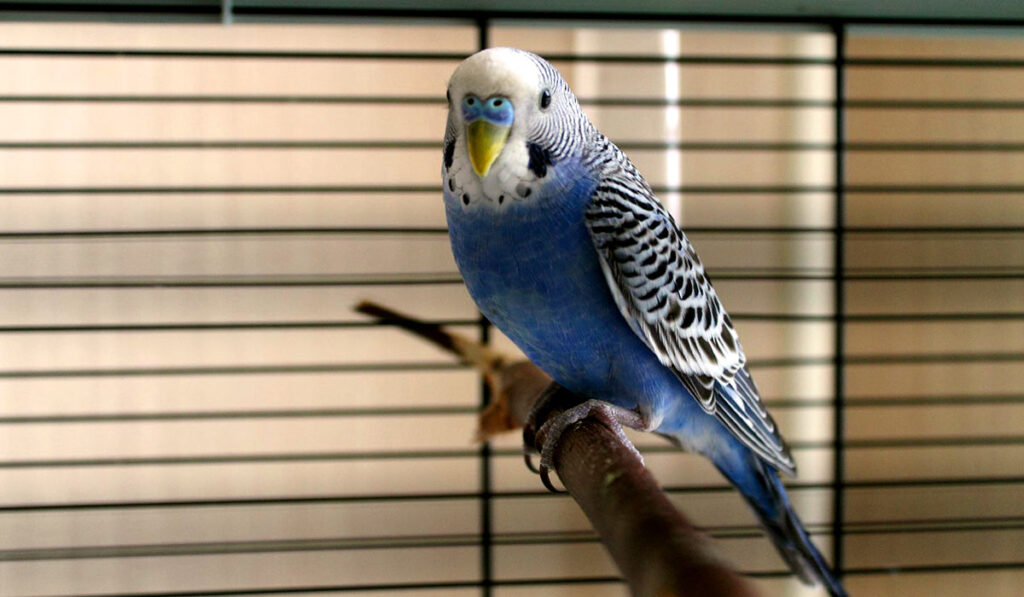
Some parrot owners recommend covering one side of the “house” with an opaque piece of fabric so that the pet can find shelter under it. Parrots adapt after purchase by getting used to a new place. It is recommended that the bird be given several days to develop the territory.
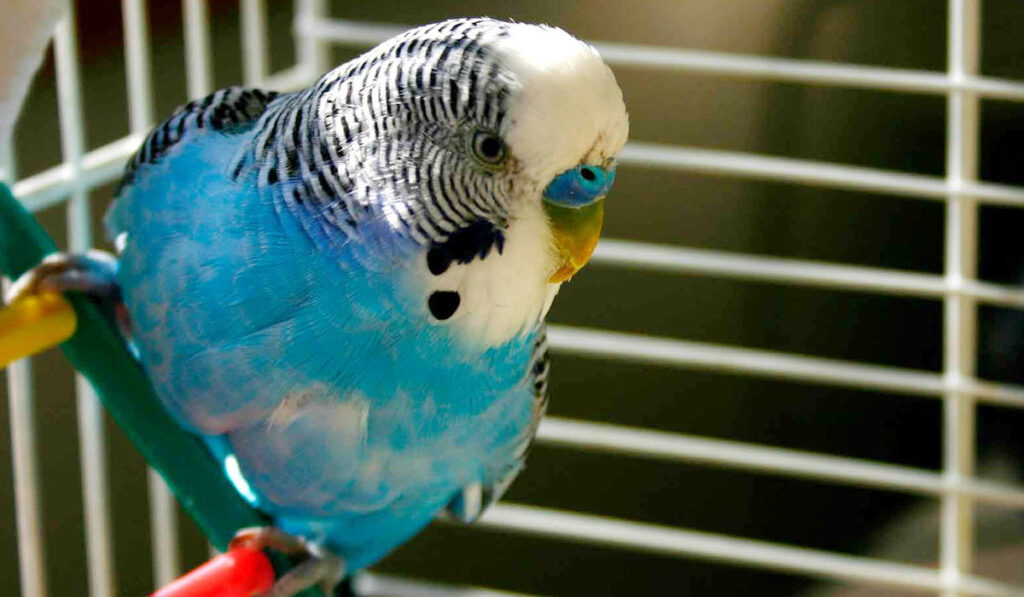
If the parrot does not eat from the feeder for several days, pour food onto the tray, trying not to make sudden movements so as not to scare the bird.
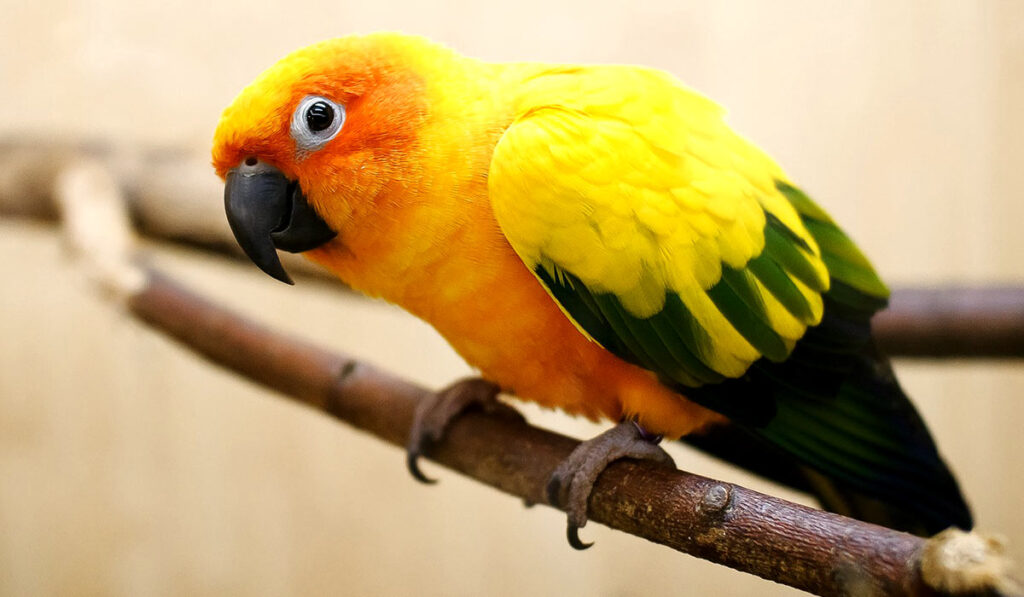
The bird itself will find food and begin to eat. And when he gets used to it, don’t hesitate: he will start using the feeder for its intended purpose every day.
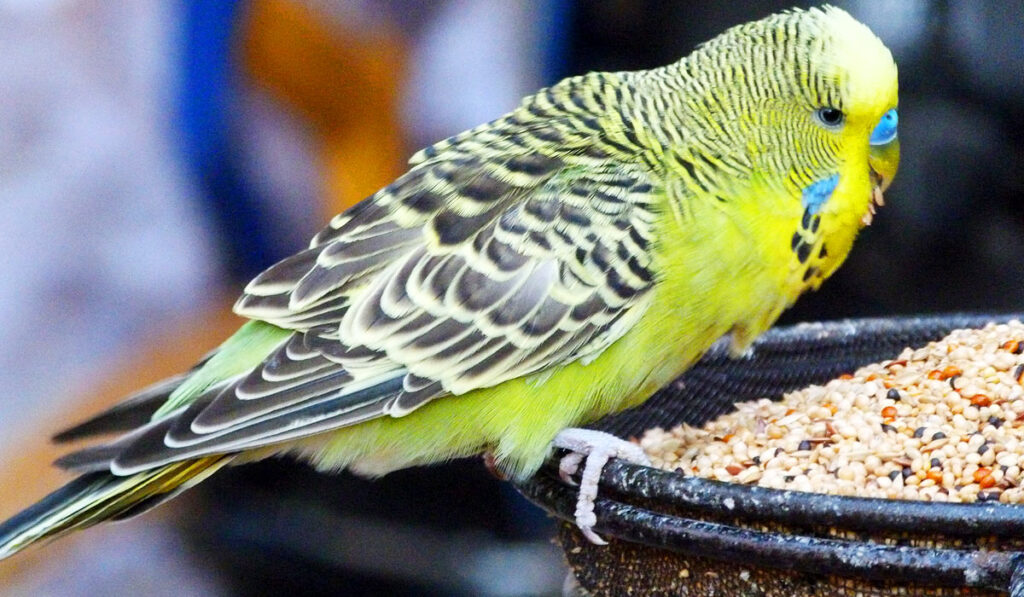
Have you noticed that the bird drinks a little? The container with water can not be mounted on the wall but placed on the bottom, and the parrot will drink from there until complete adaptation to the new territory occurs.
The bird may sit on a perch and remain silent. This behavior indicates stress due to a change in environment. Don’t worry; all this will pass in a few days, and the bird will begin to delight you with its activity and chirping. For now, leave it alone and try not to scare it. This way, your pet’s adaptation period will pass quickly and painlessly.
Parrot’s first flight – it is essential.
Even though budgies and cockatiels are domestic, they must fly like their wild relatives. Therefore, if you are thinking about when you can let a parrot out of the cage after purchasing it and whether it is worth doing it at all, we can confidently say it is worth it.

You can allow the bird to go free immediately after you see that the bird has become accustomed to its new family, that is, with you!
Many owners are concerned about what will happen if the parrot is not allowed out of the cage. This will hurt his health; he will be depressed, refuse to eat food, and may even get sick.
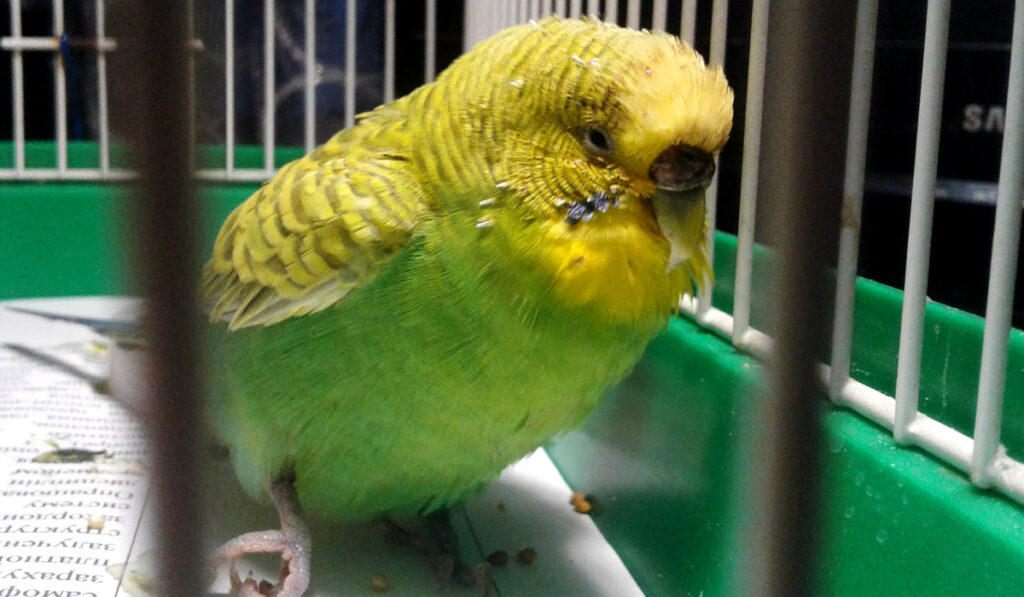
Flight is significant for a parrot. The pet must fly; otherwise, the wings may atrophy, and regular activity will remain only a dream for him.
It would be perfect for the bird if you allowed him to fly without limiting his freedom of action. Also, could you buy your bird a large cage where you can freely spread its wings and train its muscles? The larger the size, the better, especially if you plan to have a second bird.
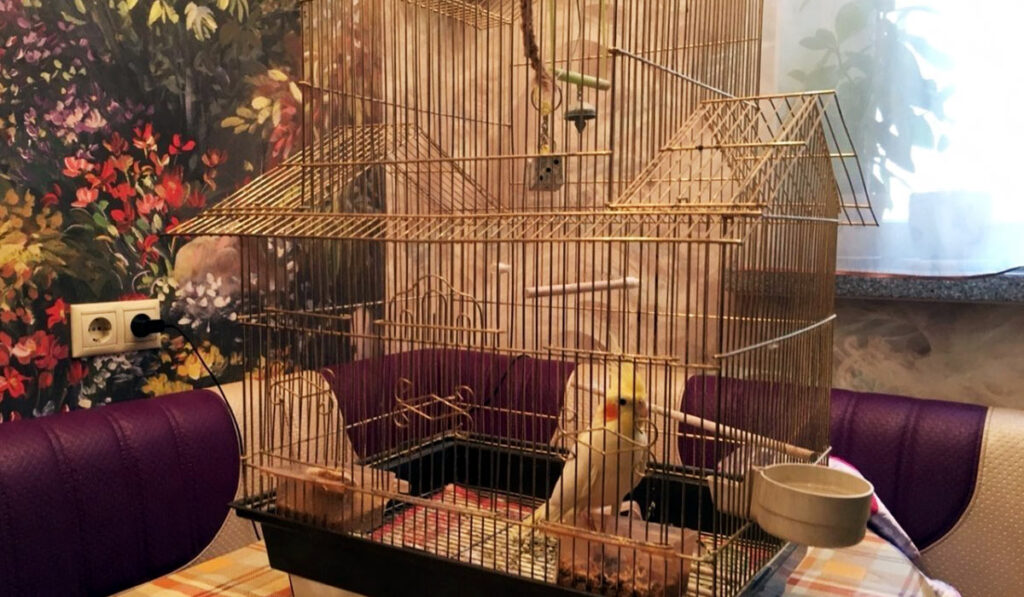
After reading this information, you will find the answer to whether it is possible not to let the parrot out of the cage because from what is written above, it is clear that flight for the budgerigar and any other parrot is as essential as air. Bird and flight are inseparable!
Video: parrot learns to fly:
When and how is the best time to release a parrot from its cage after purchase?
When and how can a bird be let out of its cage for the first time? This question plagues many bird owners. Before allowing the bird to take its first flight, please ensure it is accustomed to its new habitat. A bird should not be afraid of its owner or other pets.
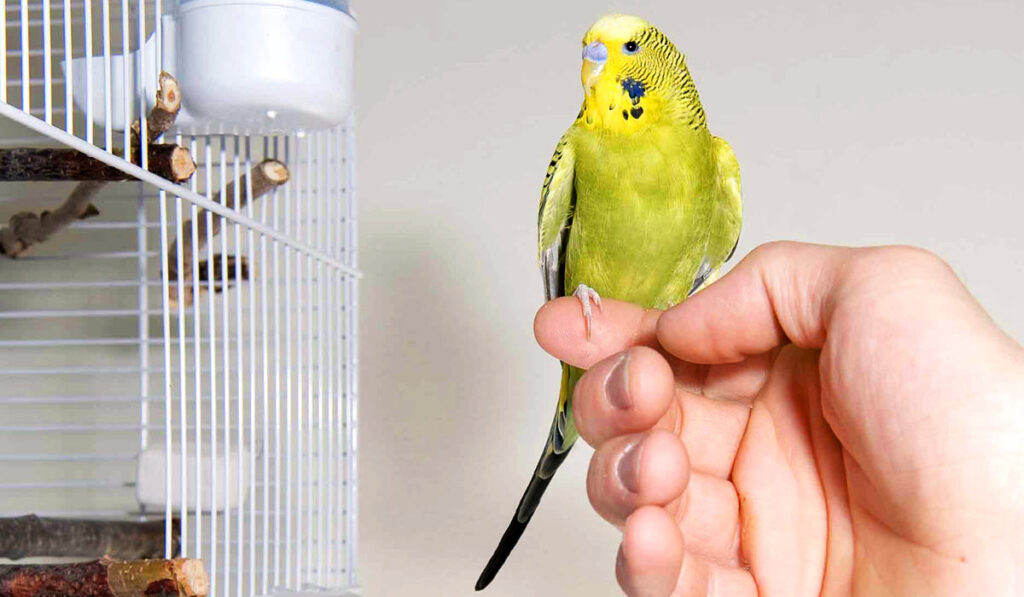
It usually takes up to three weeks to get used to it. The parrot’s first flight should occur in a spare room without dangerous objects or the presence of other pets. Don’t force him to leave the cage if he doesn’t want to.
Perhaps the pet needs time to get used to it, or there is still fear. Could you give the bird time? You will understand when you can let your budgie out of its cage so that the flight will bring him benefit and pleasure.

Typically, the calmest behavior in birds, regardless of breed, is in the afternoon, so if you are wondering when you can let your cockatiel or budgie out of its cage, do it after lunch. Take care of your free time in advance because you must watch the bird and ensure it doesn’t get hurt.
It is better not to leave one parrot in the room. You need to monitor your pet’s flight. Parrots can damage themselves and your equipment—they love to chew on wires and pull out buttons from the remote control or laptop!
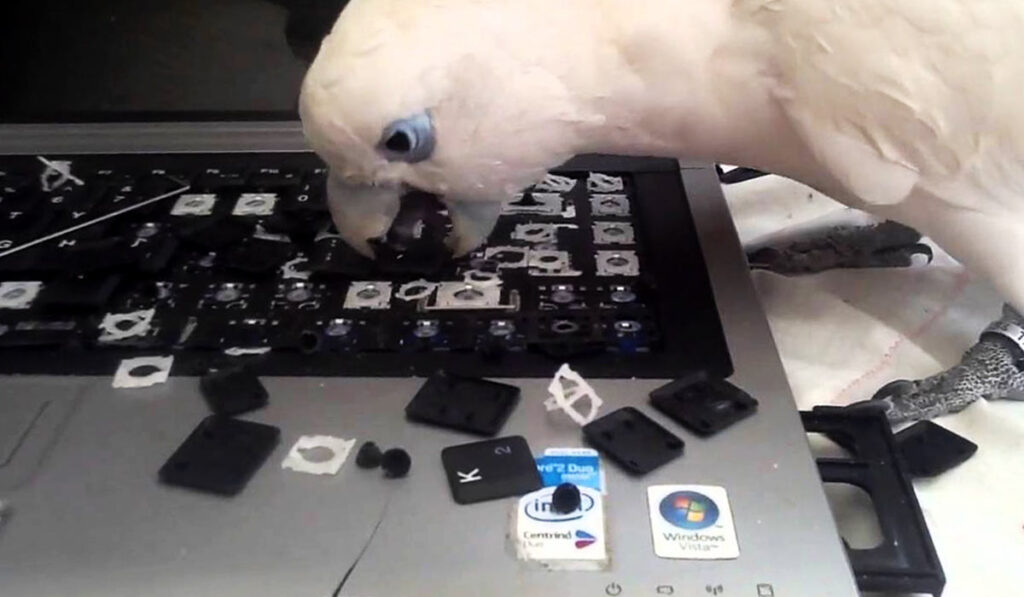
Before releasing your parrot, you must do the following:
- Close windows, doors, and vents to prevent birds from flying outside.
- Remove all dangerous and sharp objects from the premises.
- Remove anything that could get caught during the flight.
- Close mirrors and cabinets.
- The windows need to be covered with curtains, as birds do not notice the glass and can not only hit them but also be injured. Very often, this leads to disastrous results.
- Remove all electrical appliances that are dangerous to birds.
- Put away all the things you value. A parrot can break them, stain them, or drop them.
- Make sure that the bird does not eat plants, as poisoning with many of them can lead to death.
During the flight, it is advisable to observe the following:
- Make sure that the bird does not become entangled in the curtains.
- Do not let your pet fly around the kitchen (especially if something is being prepared in the kitchen.
- Make sure that the bird does not eat indoor plants.
The pet may not immediately leave its shelter, so after opening the door, step away and observe its behavior. At first, the bird may be afraid to be outside the area of ”its “apartment”—it will rush around anxiously or climb onto the closet and sit there. At this point, please do not touch it. Please wait until it flies to where you can catch it and return it to the cage.
How to put a parrot in a cage?
Now you know when you can let your parrot out of the cage, but it is also essential to understand how to return it after it has flown around the room. To quickly put your pet back, you must study his habits, establish a trusting relationship, and feed him grains. So, you’ll be able to find a common language with him quickly.
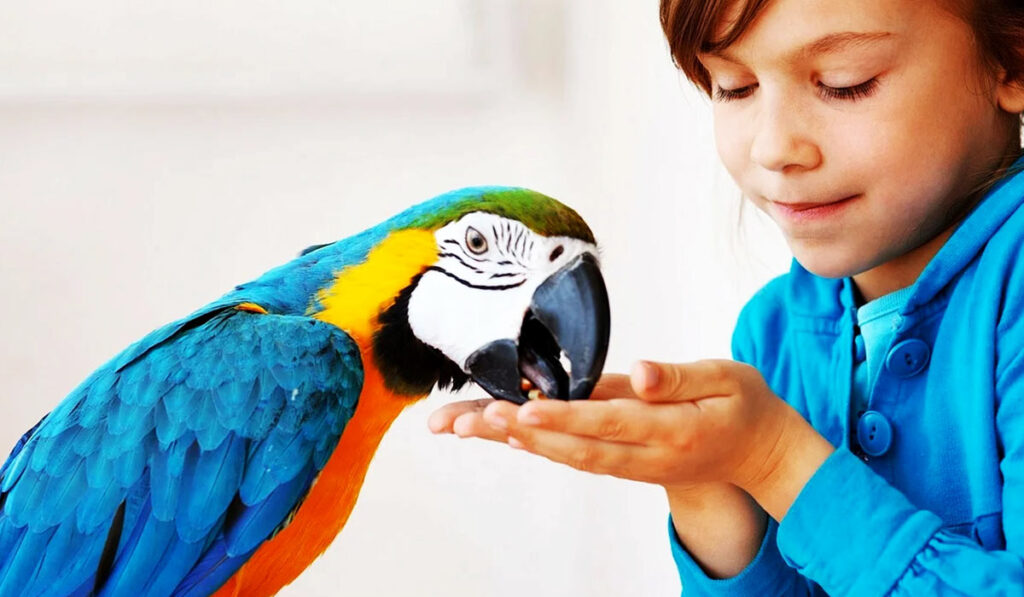
The bird often does not want to return to its “apartment,” as it likes to play with the owner or do its own bird business. He will be interested in watching you when you try to catch him. It also happens that a pet sits at the entrance to the house, and as soon as the owner comes to close it, he flies away. This means the time to return home has not yet come, and the bird wants to frolic.

If you let the bird out constantly, it will get used to the regime and enter the house independently. The first time, of course, you will have to try to lure the parrot. Monitor its feeding schedule, and when you accurately determine the eating time, allow the bird to go out sometime before lunch. This way, she will fly and return to the house to eat, and you can close the door as you like.
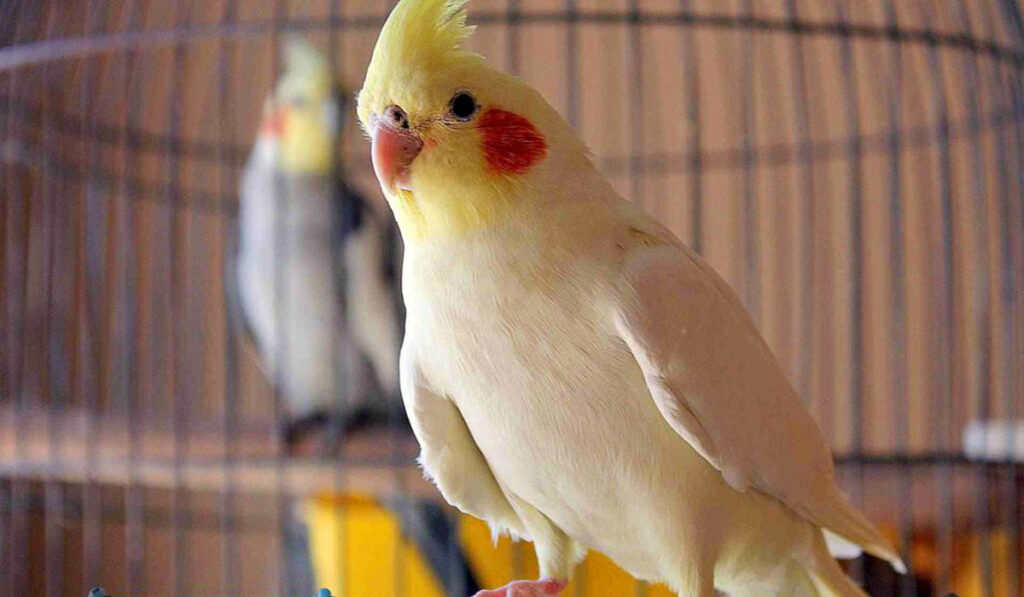
You cannot catch a parrot with your hands or a towel. Not only will you scare him, but you may also cause injury. In addition, after this, the bird will begin to be afraid of you and stop coming out, as it did after buying it.
A soft, dark cloth can be used as a last resort if you urgently need to go away and the bird does not want to return to its home. Having thrown a blanket or piece of cloth over the bird, carefully and carefully transfer the package into the cage and slowly open it, freeing the involuntary captive.
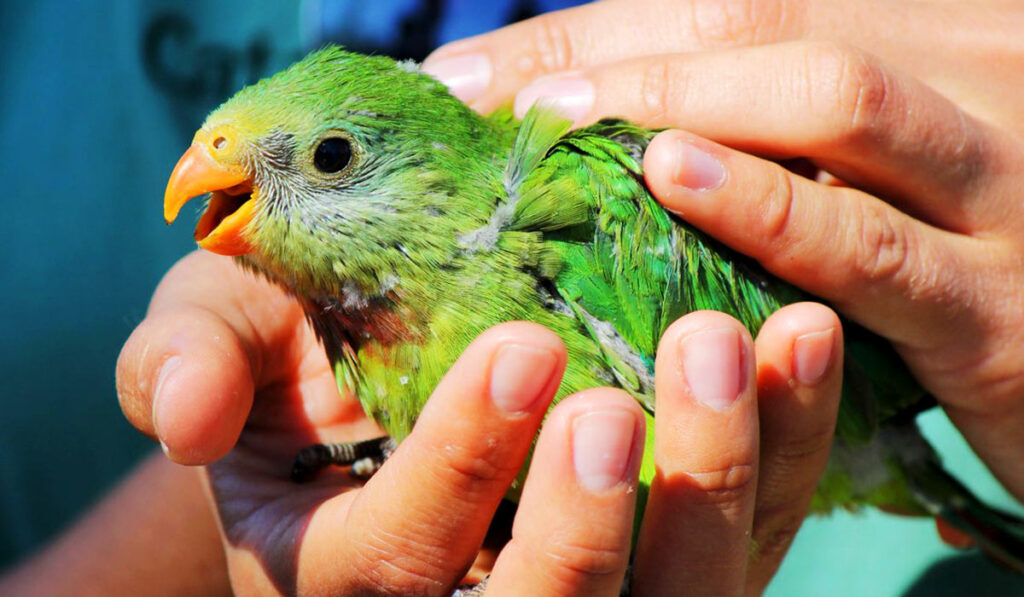
Some birds like to be carried on their owner’s hand or finger. It is straightforward to return such a bird. You can try to lure her with a treat, and then she will return on her own, and no problems will arise.
Video: how to lure a parrot into a cage
How often should a parrot be released from its cage?
If a bird has a large, spacious house, it does not need to be out in the wild often. But if its home is small, over time, the pet will begin to experience discomfort, and the flight will become simply necessary for him.
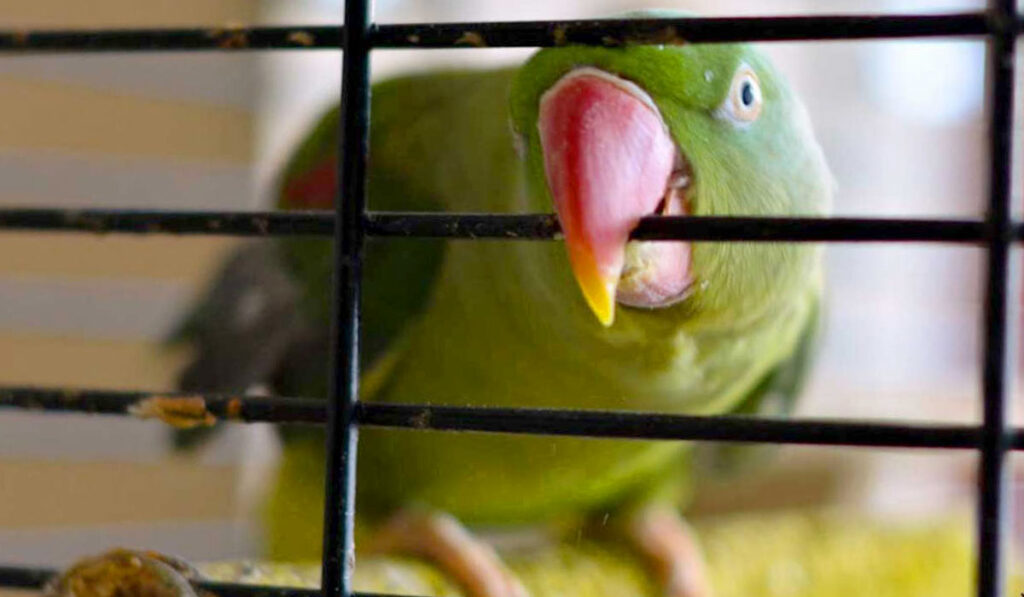
Be that as it may, each owner decides how often he will walk his pet.
You can release a parrot at least every day. The main thing is to provide him with a safe flying environment.
So that the bird does not get used to freedom, it needs to fly no more than two to three hours. Otherwise, hysterics will begin. It can jump on the bars, scream loudly, and demand to be released.
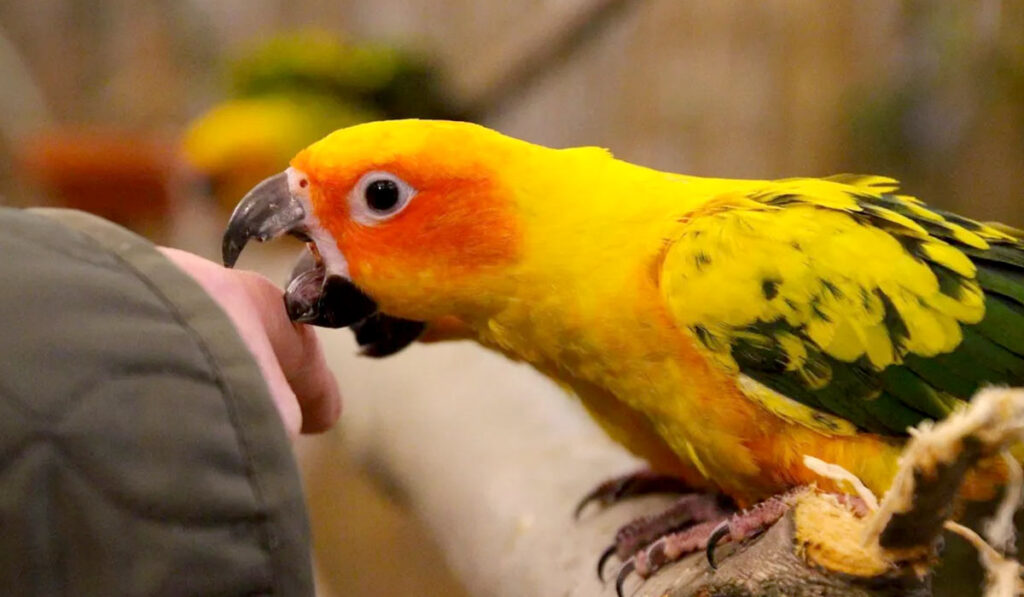
In any case, the frequency of your pet’s flights will depend on its activity, character, and free time. It is worth keeping in mind that young parrots require freedom regularly!
Take a closer look at your bird more often, and you will definitely understand when it is ready to take its first flight.
How to teach a parrot to fly
The parrot’s flights, which take at least a quarter of an hour a day, contribute to the proper development of the pet. Muscles become more muscular, and life expectancy increases.
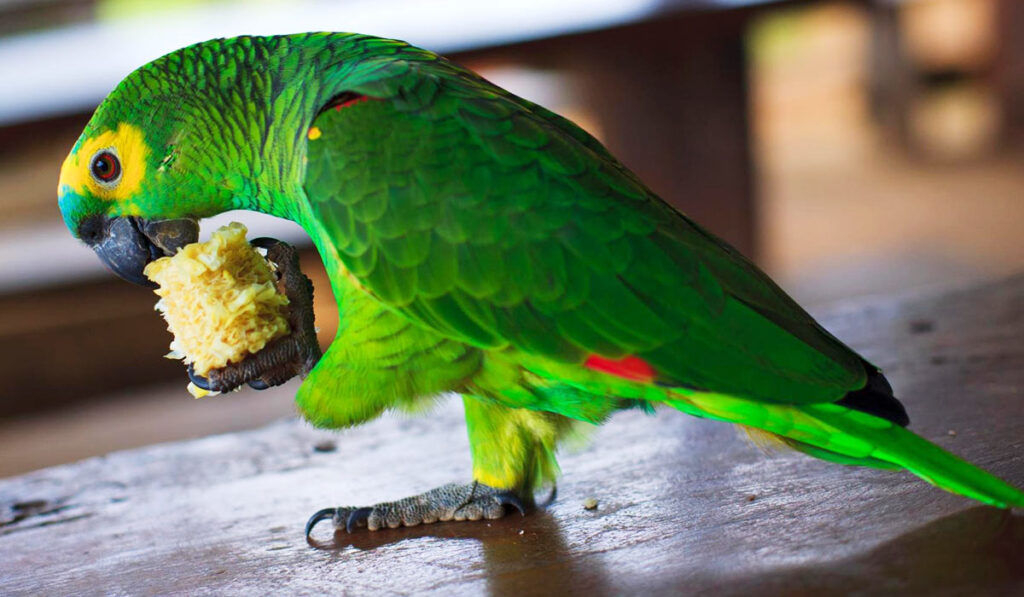
The most important rule of the learning process is the voluntary desire of the bird. Avoid violence, tossing, or pushing, as you risk losing the bird’s trust. The ability to fly is inherent, and the parrot either:
- cannot, since this is the first experience;
- maybe, but he doesn’t want to.
First, you should pay attention to the bird’s health and mood. Make sure the cage is clean, the water is always fresh, and the food is complete. Separate vitamin intake is encouraged.
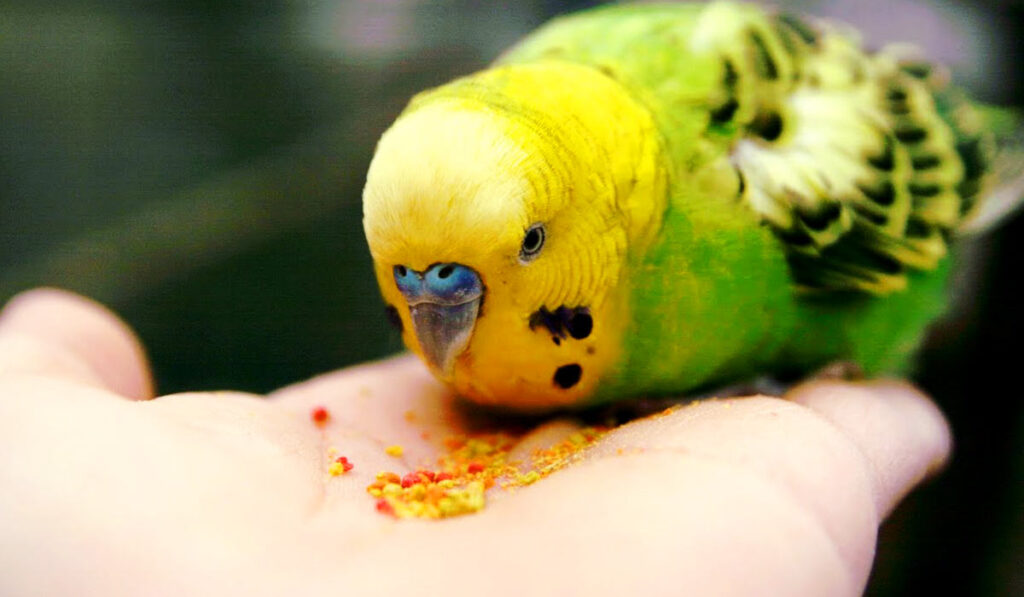
After the adaptation period of being in the house has passed, moving on to the next stage will be possible. Could you show your parrot that the cage has a way out and the surrounding area is at his disposal? The bird will sit on your finger, and you will carry it out of the cage and back several times. You can try to do this smoothly, avoiding sudden movements to avoid scaring the bird.

You can try to “hint” him a little about flying. To do this, place it on your finger and slowly move your hand from side to side. Again, do not forget to avoid sudden movements that could cause the bird to lose its balance.
You can attract your parrot’s favorite toys or food during the training process. Place it on a small hill for viewing and simply beckon. Let the bird see a familiar object and make its own decision. A parrot is a curious creature by nature, and if, at the moment, it is not too scary, then everything should work out.
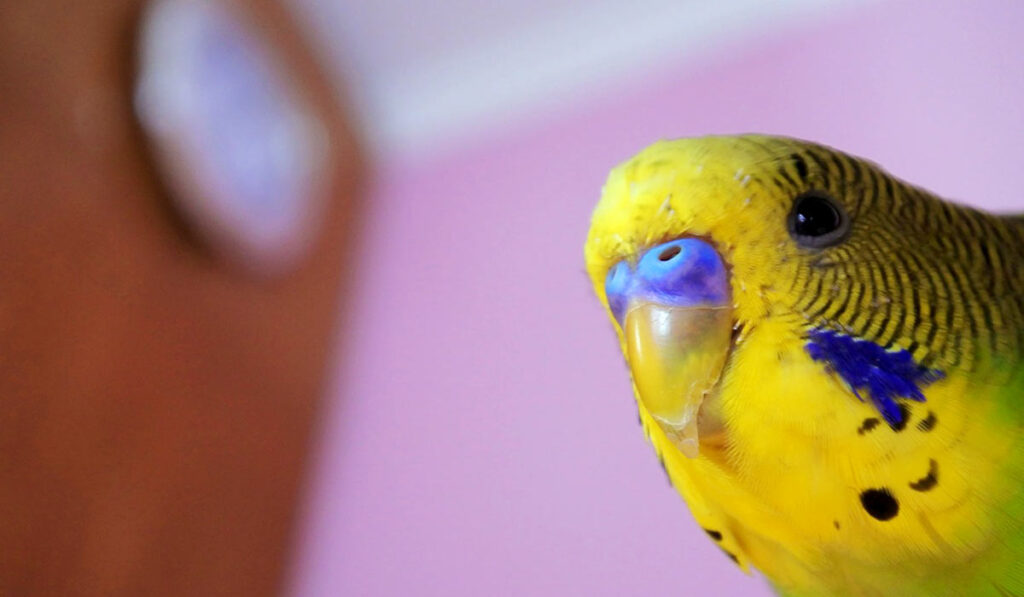
Remember safety. Close and curtain the windows and mirrors, as glass-related injuries are often the cause of bird death.
Video: parrots fly around the room:




